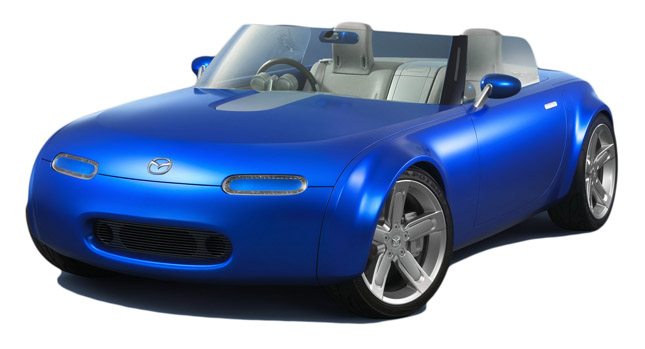[2003 Mazda Ibuki Concept pictured above]
During the last two decades, most new models are bigger, safer, better equipped but also heavier than the vehicles they replace. The Mazda MX-5 is a typical example: the first generation launched in 1989 tipped the scales at just 980 kg (2,150 lb), while the current, third-generation model starts from 1,095 kg (2,410 lb).
Sure, it’s roomier and more luxurious, but it’s also more expensive and, although in no way a boring car, not quite as fun to drive as the original. In addition, you need to get the 2.0-liter engine to have the same kind of poke the original enjoyed with a 1.6-liter engine and its successor with a 1.8-liter unit.
Mazda intends to perform a “back to basics” feat with the next iteration of its little roadster that is due in 2014. “We will return to the original. It will be lightweight and the cost will be lightweight too. It will be easy to handle and fun to drive,” Mazda’s head of research and development, Hirotaka Kanazawa, told British publication What Car?.
The Hiroshima-based carmaker is heavily promoting its new Skyactiv technologies. It’s natural, therefore, to use all the tech in the new MX-5 which, thanks to its low weight that will be around 1,000 kg (2,200 lb), won’t need a big-displacement engine.
In fact, as Kanazawa revealed, the fourth generation will be the first MX-5 to shun normally aspirated engines in favor of a small displacement turbocharged Skyactiv unit rumored to be a 1.3-liter four-cylinder engine.
Sources from within the company have revealed that the “back to basics” philosophy also applies to its handling, which will be more driver focused and less comfort oriented than today’s car.
As far as the styling is concerned, the next MX-5 will adopt Mazda’s new “Kodo” design language introduced in the 2010 Shinari concept and the Tokyo-launched Takeri concept that previews the next Mazda6.
PHOTO GALLERY


























